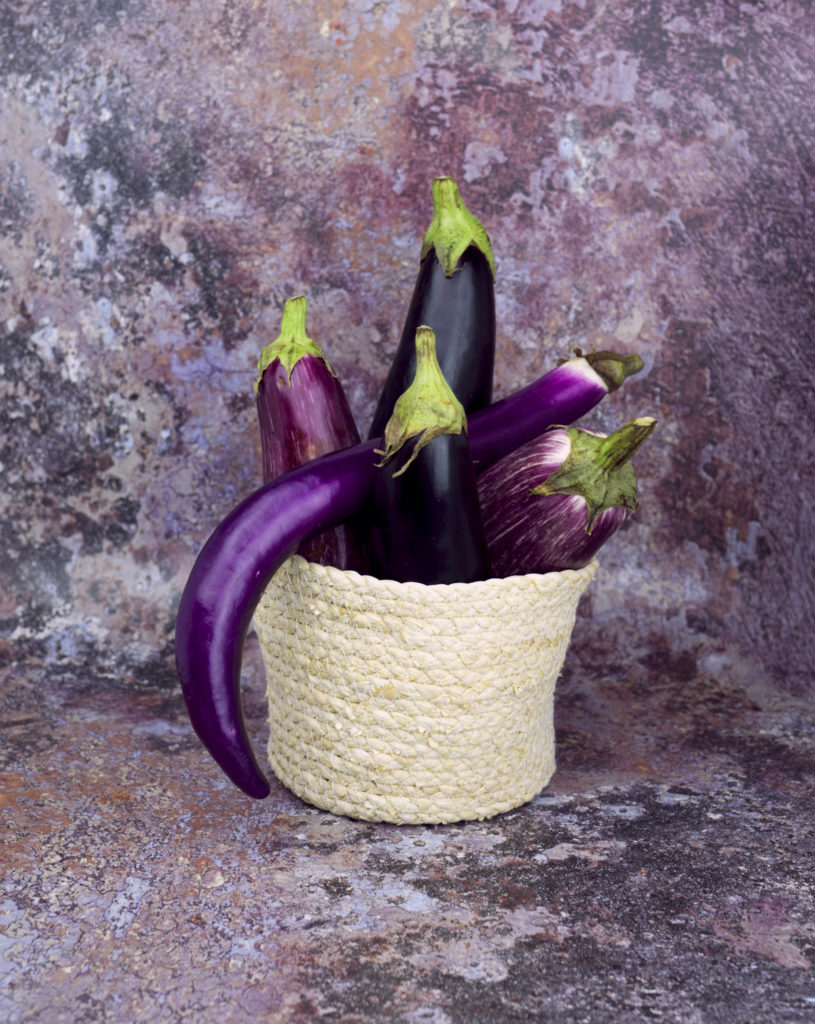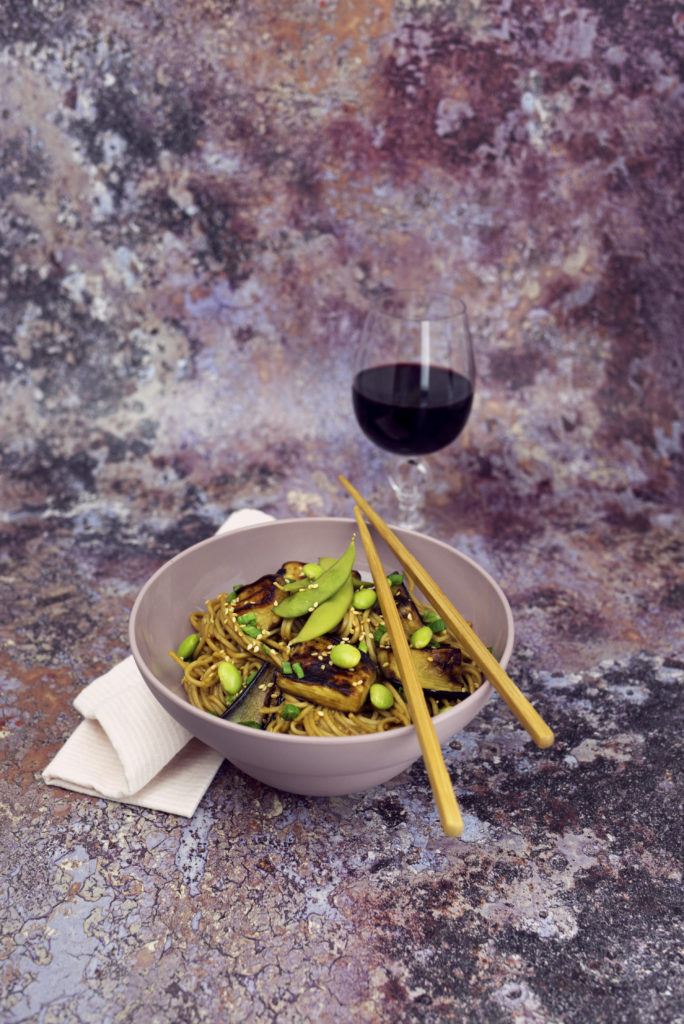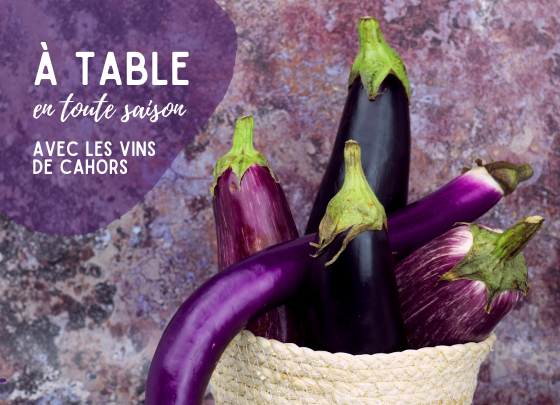Why is eggplant a surprisingly good partner with red wines like Cahors?

Eggplant
Although this ingredient has accompanied us throughout the sunny days, it is also the perfect companion in a gentle transition toward the heartier and richer dishes of fall season.
Widely appreciated in the holy summer trinity of ratatouille, alongside tomatoes and bell peppers, eggplants are a versatile condiment in many recipes, and have gained more attention as a single ingredient in recent years.
Dressed in seductive shades of intense purple with blue or brown hues, and sometimes in lavender and cream-colored stripes, the eggplant comes in many different shapes and sizes, but always carries a contrasting, bright green hat of small leaves and its cut-off stem as a hatpin. While Eastern cuisines often use thin and long eggplant shapes, or miniatures not bigger than an egg, for curries and stews, Western cuisine is most commonly based on the bigger, well-rounded eggplant shapes.
Everything You Need to know About Eggplant
Cut into halves, the raw eggplant doesn’t make much of an impression at first: odorless, and with a pale white flesh of porous and spongy texture, it reveals no more than a neutral to a slightly bitter flavor – the reason it’s not consumed raw. Heat, however, spectacularly transforms the eggplant into a rich, unctuous, and silky texture, with slightly nutty flavors and delicate umami notes. Charred on a barbecue or pan-seared, eggplants even develop meaty savoriness, which is why this purple fruit – botanically classified as a berry – serves as a staple ingredient in plant-based cuisine.
The easiest way to bring out all the delicious flavor is to apply intense heat over a longer time – grilling, roasting, pan-searing on high heat, shallow-frying or deep-frying are the best techniques to obtain mouth-watering results. They are appetizing in their pure form, served crispy on the outside and mushy on the inside, spooned out of their charred skins as a purée, or whipped up with nothing but a bit of olive oil, garlic paste, salt and pepper to a caviar d’aubergine dip.
To be precise, a little bit of extra virgin olive oil enhances the eggplant’s creaminess; however, one has to keep an eye on the amount of fats added to a recipe because the spongy flesh soaks up great amounts of oil or butter in no time, quickly rendering the dish heavy and flat. On the upside, the tendency to absorb seasoning proves to be a virtue in other cases: eggplants effortlessly incorporate any kind of spice or aromatic condiments, making them a fantastic vector ingredient.
How to pair Cahors wine with eggplant?
The magic link between red wines from Cahors and eggplant dishes is two-dimensional: the silky melt-in-the-mouth texture of cooked eggplant perfectly matches the broad, mouth-filling character of the Malbec varietal, and the savory umami notes – which can furthermore be enhanced by roast flavors and seasoning – find their counterpart in the abundant dark fruit flavors and the spicy complexity of Cahors wines. Even more so when they come from old vines – making for concentrated, full wines with aromatic depth, or from expressive terroirs like the iron-rich clay-limestone soils called sidérolithique, or if they’ve been aged in big oak vessels, which adds further aromatic complexity.
Don’t hesitate to go big and bold on sweet spice and intense seasoning when you’re serving eggplants with Cahors – to encourage you to do so, we’re presenting a Japanese-inspired dish using umami-boosting miso and soy sauce, as well as an oriental interpretation of an eggplant dish – a Tajine, generously enriched with sweet fruit and sweet spice.
Soba Noodles with Miso Eggplant Recipe
Serve cold or warm

Soba Noodles with Miso Eggplant
Ingredients for 2 portions:
- 600 g eggplant
- 1 thumb-sized piece of gingerroot
- 2 garlic cloves, peeled
- 4 tbsp low-sodium soy sauce
- 4 tbsp mirin
- 2 tbsp roasted sesame oil
- 50 g brown rice miso (or other dark miso)
- 2 tbsp neutral oil to fry
- 180 g soba (Japanese buckwheat noodles)
- 1 handful of edamame soybeans
- 1 tsp corn starch
- 3–4 tbsp toasted sesame seeds
- Spring onion greens to garnish
Steps to Make It :
1. Cut the eggplant into big chunks, discarding the stem.
2. Grate the ginger and garlic into a fine paste.
3. In a bowl, mix soy sauce, mirin, and sesame oil, and stir in the ginger and garlic paste, as well as the miso.
4. In a large bowl, mix the eggplant chunks with the sauce preparation, and set aside to marinade for at least 30 minutes.
5. Making sure to keep the liquid for later, drain the eggplant, then pat the chunks dry with kitchen paper.
6. Heat the oil in a deep skillet at high temperature, then fry the eggplant in small batches at medium-high heat until the chunks turn crispy on the outside and golden brown.
7. Prepare the soba noodles following the package instructions. Drain the noodles, then rinse with cold water for 20 seconds. Set aside.
8. Steam the edamame (peeled or still in their pods) for 3–4 minutes and set aside.
9. Stir the corn starch into the remaining cold marinade, then immediately add into the empty skillet and heat for about 1 minute, constantly stirring until it thickens. Remove from the heat and add the soba. Stir gently until the noodles are covered in the sauce. Add 2 tablespoons of toasted sesame seeds.
10. Serve the noodles in a bowl, add the fried eggplant and edamame on top, and garnish with chopped spring onion greens and the remaining sesame seeds.
Wine recommendation:
Pair this dish with an abundantly dark-fruited and concentrated Cahors wine, bottle aged for 3 to 5 years, made from the particularly iron-rich clay-limestone soils of the sidérolithique terroirs, which bring about wines full of intense fruit, racy spice, and smoky-savory umami notes.
© Stefanie Köhler, Gouttes & goûts








